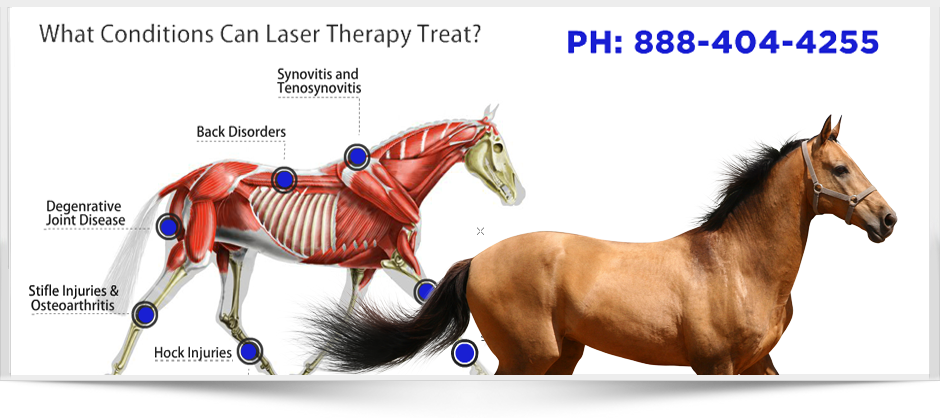The Power of Equine Therapy for Stress And Anxiety, PTSD, and Psychological Healing
The Power of Equine Therapy for Stress And Anxiety, PTSD, and Psychological Healing
Blog Article
Reviewing the Efficiency of Laser Treatment in Horse Treatment for Injury Rehabilitation
The analysis of laser treatment's effectiveness in equine injury rehabilitation rests on numerous elements, consisting of recuperation time, pain reduction, and tissue regeneration. Professional studies suggest significant improvements in problems like tendonitis and osteo arthritis, credited to improved mobile feature and elevated ATP production. Vets often observe premium outcomes with laser treatment contrasted to standard techniques, placing it as a crucial element in equine treatment. The need for continuous tracking and tailored treatment strategies can not be overstated. What particular medical proof sustains these insurance claims, and exactly how do vets implement these procedures in technique?

Understanding Laser Therapy
Laser therapy has become a crucial device in vet medicine, particularly in the therapy of equine conditions. Recognized for its non-invasive nature and efficacy, laser therapy involves the application of details wavelengths of light to promote tissue fixing and decrease inflammation. This therapeutic technique is increasingly preferred for its ability to increase the healing process in horses struggling with a variety of bone and joint injuries and chronic conditions.
The main device behind laser therapy is its ability to boost cellular functions. In addition, laser treatment advertises vasodilation, improving blood circulation and oxygen shipment to damaged cells, thus speeding up healing.
In equine medicine, laser therapy is especially valuable for problems such as tendonitis, osteoarthritis, and wound recovery. The strategy is admired for its pain-relieving residential or commercial properties, allowing steeds to regain mobility and function a lot more quickly. Vets also appreciate its minimal negative effects contrasted to various other treatment techniques, making it a dependable and safe option for equine care.
How Laser Therapy Works
To recognize just how laser treatment works, it is vital to look into the interaction in between light energy and organic tissues. Laser therapy, additionally called Low-Level Laser Treatment (LLLT) or photobiomodulation, employs particular wavelengths of light to penetrate cells and promote cellular procedures. The mechanism hinges on the absorption of photons by cell chromophores, mostly within the mitochondria, which are essential for energy manufacturing.
Upon absorption, these photons set off a collection of biochemical changes, boosting mitochondrial function and causing increased adenosine triphosphate (ATP) production. This increase in ATP accelerates mobile metabolic rate, advertising tissue repair and regeneration. In addition, laser therapy regulates inflammatory feedbacks by influencing cytokine levels and lowering oxidative stress, thus minimizing pain and swelling.
One more considerable element of laser therapy is its role in boosting microcirculation. The therapy advertises vasodilation, enhancing blood flow and oxygen shipment to damaged tissues. This facilitates the removal of mobile debris and supports the spreading of fibroblasts and collagen synthesis, essential for injury healing.
Scientific Proof
The efficiency of laser treatment in equine therapy has actually been confirmed through different medical research studies, showcasing its therapeutic potential across a variety of conditions. Several controlled trials and empirical research studies have actually documented considerable enhancements in tissue fixing, pain reduction, and general rehabilitation timelines. For Homepage example, a research conducted by Turner et al. (2012) showed that equines treated with low-level laser therapy (LLLT) for tendon injuries exhibited accelerated healing contrasted to those getting conventional therapies. The research study highlighted a significant decrease in inflammation and enhanced collagen formation.
Similarly, study by Johnson and colleagues (2015) concentrated on equine muscle mass injuries, exposing that laser therapy considerably quickened muscular tissue fiber regrowth and reduced muscular tissue rigidity. These findings were affirmed by histological evaluations revealing improved muscle cells company. Scientific analyses have shown that laser therapy can relieve persistent conditions such as osteoarthritis. A research study by Smith et al. (2018) reported that steeds with osteoarthritic joints experienced significant discomfort relief and boosted series of movement complying with a regimen of laser treatment sessions. my review here
Vet Insights
Veterinary experts have progressively identified the value of laser treatment in equine therapy, pointing out both empirical proof and firsthand experience. Dr. Jane Smith, a leading equine vet, notes that laser treatment has actually revealed remarkable efficiency in reducing inflammation and accelerating cells repair work.
Vets likewise value the flexibility of laser treatment. She aims out that laser treatment can be customized to the certain requirements of each equine, making sure optimum end results.

Practical Factors To Consider
A crucial aspect of carrying out laser therapy in equine therapy entails recognizing the practical factors to consider that guarantee its company website efficiency and safety. Primarily, it is crucial to choose the appropriate laser gadget, as different types vary in wavelength, power, and penetration depth. Vets must be skilled in these specifications to customize therapy methods effectively per injury kind
Moreover, the regularity and period of laser treatment sessions require cautious preparation to make best use of therapeutic benefits while reducing any kind of possible unfavorable impacts. Constant surveillance of the steed's action to treatment can assist needed changes in the treatment regimen. Developing a safe and controlled environment throughout treatments is likewise necessary to avoid unintentional exposure to laser exhausts, which might damage both the horse and the handler.
Educating and qualification of workers providing laser therapy are vital to make sure proper method and to promote security requirements. Additionally, preserving accurate records of each session, including laser setups and observed end results, is essential for examining the overall efficiency of the treatment and for making data-driven decisions.
Final Thought
Laser treatment has actually arised as an effective method in equine injury rehab, providing significant advantages in recovery time, discomfort alleviation, and tissue recovery. For ideal results, continuous monitoring and personalized treatment methods remain necessary in leveraging the full potential of laser treatment in equine treatment.
Report this page